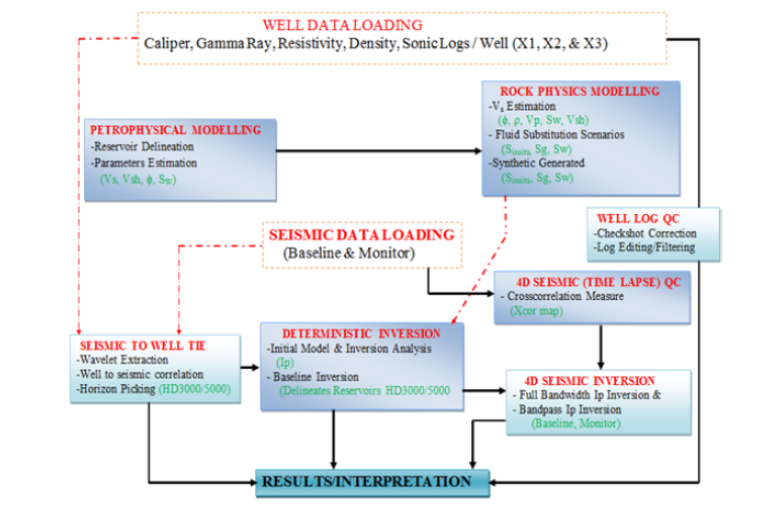


Indian Journal of Science and Technology
Year: 2020, Volume: 13, Issue: 36, Pages: 3738-3753
Original Article
Aniefiok Sylvester Akpan1*, Francisca Nneka Okeke1,Daniel Nnaemeka Obiora1
1Department of Physics and Astronomy, University of Nigeria, Nsukka, Enugu State, Nigeria
*Corresponding Author
Email: [email protected]
Received Date:01 June 2020, Accepted Date:20 June 2020, Published Date:07 October 2020
Aim/objectives: The aim of this research is, to use Time lapse (4D) seismic and investigate the influence of low frequency update in deterministic model-based seismic inversion employed in delineating a prospect saturated with bypassed hydrocarbon accumulation. Method: The dataset employed in this study incorporates 4D seismic volumes with fifteen (15) years production, interval between 2001 baseline and 2016 monitor seismic vintages. The inversion was carried out using full bandwidth of the updated low frequency and bandpass filtered low frequency approaches. The seismic vintages (baseline and monitor) were simultaneously inverted into acoustic impedance volumes for the two approaches. The formation fluid and lithology were discriminated through fluid replacement modelling (FRM) based on the colour separation between brine and gas saturation scenarios. Findings: The two inversion methods employed reveal six (6) zones suspected to be saturated with bypassed hydrocarbons. The delineated bypassed zones are masked in the full bandwidth approach,depicting the effect of the updated low frequency model. Meanwhile, the bandpass filtered approach result presents a better delineated bypassed reservoir as the zones are more pronounced when compared with the full bandwidth approach. Porosity estimate reveals that the bandpass filtered approach is characterized with excellent porosity in the suspected bypassed zones. The results equally gave more reliable and full delineated bypassed zones. Originality and novelty: The dataset employed in this study were obtained from a producing hydrocarbon field which, interest is to maximize the production of oil/gas. The study will bridge the inherent gab observed in using model-based seismic inversion approach to analyse and interpret seismic data in order to delineate hydrocarbon prospects. The research reveals that,the model-based seismic inversion method is still very effective in delineating hydrocarbon prospect when the updated low frequency is bandpass filtered to remove the model effect which influences the inverted acoustic impedance results.
Keywords: Porosity; frequency; bypassed; reservoir and impedance
© 2020 Akpan et al.This is an open-access article distributed under the terms of the Creative Commons Attribution License, which permits unrestricted use, distribution, and reproduction in any medium, provided the original author and source are credited. Published By Indian Society for Education and Environment (iSee).
Subscribe now for latest articles and news.